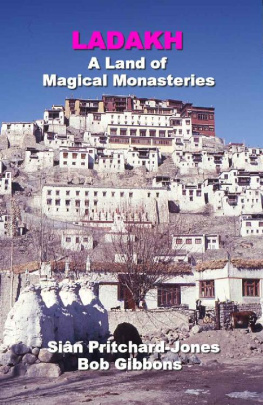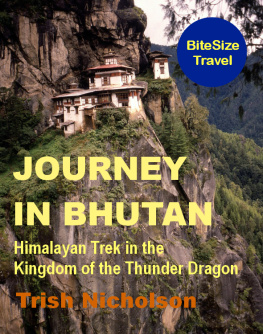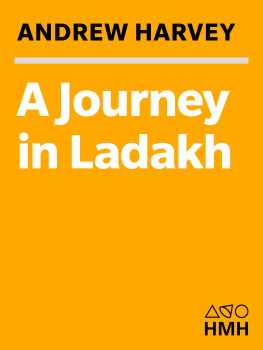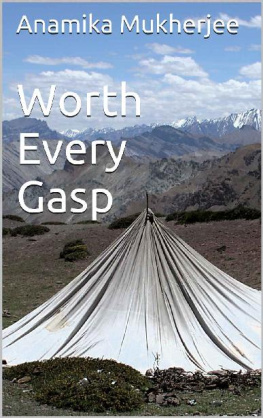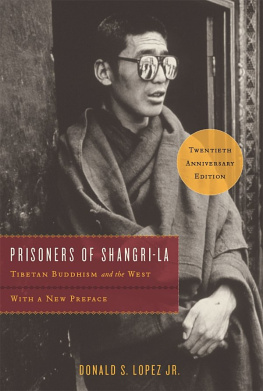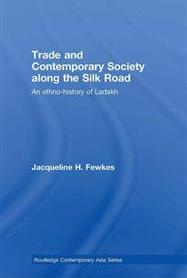LADAKH
A Land of
Magical Monasteries

Sin Pritchard-Jones
&
Bob Gibbons
Sin Pritchard-Jones and Bob Gibbons, 2014
All rights reserved. No part of this publication may be reproduced or transmitted in any form or by any means without the prior permission of the copyright holders.
ISBN of print edition: 978-1499515404
First published in 2006 by Pilgrims Publishing, Varanasi
Front cover photo: Thikse monastery
Title page photo: Chemrey monastery
Text: Sin Pritchard-Jones and Bob Gibbons
Photos: Sin Pritchard-Jones and Bob Gibbons
Originally conceived by: Rama Tiwari and Joanne Stephenson
New edition design: Sin Pritchard-Jones and Bob Gibbons
Contents
Acknowledgements
Thanks to Rama Tiwari and Joanne Stephenson for asking us to write this book. The project greatly added to our fascination and knowledge of the incredible sights and overwhelmingly beautiful geographical settings of Ladakh.
To Ashish, Lala, Rhicha, Sunil, Arjun and the ever-patient staff of Pilgrims, who helped us to seek out the necessary information among the crowded bookshelves of the shop, deserve our thanks too. Thanks to Christopher for working flat out in Varanasi the only position to be in!
Thanks to Bhandaris Photo Shop, Thamel, Kathmandu, for their prompt and efficient service.
In Leh we are grateful to M Yasin at the Hotel Lasermo, and Dorje Tsering at the Jigmet Guest House, for their hospitality, as well as the taxi drivers, in particular Mohamed Gul, who drove us over icy roads in the middle of winter to explore the hidden corners of the valleys.
Jet Airways provided the best in-flight omelette we have ever tasted!
Important note for the 2014 edition
Please note that the names of hotels and restaurants are likely to have changed considerably over the years, and as Ladakh has developed as a tourist destination there will almost certainly be far more choice than before.
The geography, history and location of the monasteries will not have changed; they have been there for centuries and continue to mesmerise and attract all visitors.
Please do contact us with your updates through our website www.expeditionworld.com . Thank you!
Authors note
We apologise for any factual errors within the text. Many of the monasteries move their idols around from temple to temple, sometimes during renovations or for other unknown reasons. Some of the temples have been renamed over the past few years, some no longer exist and others are completely new. With regard to the strange and unpronounceable names of some of the idols, sometimes even the monks are not sure of the correct name, let alone transliteration. It would appear that statues, images and idols are periodically moved around within a chapel, or even to a different chapel, so this may also cause confusion.
It is a source of some regret that we have been unable to produce an exhaustive and complete guide to the many and varied monasteries of Ladakh, because of inclement weather and the unfortunate fact that on occasions the monk with the keys to some of the chapels have been in Leh or otherwise engaged with pujas, death rites for the near-by deceased etc. What we have achieved is to list and describe the most accessible, convenient and most frequently visited monasteries closer to Leh. These have detailed maps and diagrams to aid identification of the numerous deities. By way of background we have also included details about many other monasteries of interest in Ladakh and Zanskar. Some of these we have visited in the past and some recently; some, however, we have not.
Having first visited Ladakh in 1977, we have seen many changes in the years since. Much of the research for this book was conducted in the winter of 2006. We have done our best to be as accurate as possible under the circumstances. Updates from Pilgrims and other sources are included where relevant. Sadly many copies of the original edition were lost in the fire that destroyed Pilgrims Book House in Kathmandu in May 2013, so we are bringing it back to the market through this CreateSpace publication.
Please do let us know if you discover any more hidden gems which we should include in future editions.
Ladakhi Road Signs
from Himank and the Border Roads Association
Darling, I like you,
but not so fast
I am curvaceous,
be slow
Check your nerves
on my curves
Feel the curves,
do not test them
If married,
divorce speed
Dont find a fault,
find a remedy
The journey of life is long,
the path unknown
We cannot command nature,
except by obeying her
In the middle of difficulty,
find opportunity
Preface
Knowledge is always purchased at the expense of what might have been seen and learned and was not
Oppenheimer, Kathmandu Post
Ladakh is a land of magical mystery, where magnificent peaks reach to the heavens, and the depth of religious fervour in its mystical monasteries is unfathomable.
Ladakh is a harsh land; its bleak mountains offer few physical comforts to the traveller. In winter all is white; on a grey day the earth melts into the sky above, but on a sunny day the dazzling quality of the pristine snow standing dramatically against the deep blue sky is unforgettable. In summer the trees burst into life and greenery abounds, but the mountains are still majestic in their power and spirituality.
The Indus Valley around Leh in Ladakh has perhaps one of the greatest concentrations of monasteries anywhere in the world. This book will take you through these valleys, exploring the monasteries and hopefully adding further interest to your trip, whether as a trekker, sightseer or devoted pilgrim.
Come with us to this high-altitude fairyland; discover the fabulous architecture, exquisite arts, astonishing idols, quirky, whimsical imagery and enlightening vistas.
Bob Gibbons
Sin Pritchard-Jones
Kathmandu 2014
Introduction
When Ladakh first opened to tourism in the mid 1970s, no one could have predicted the amount of interest that its unique landscapes and culture would attract. In the early years of tourism to Ladakh, the lucky visitors were able to begin their sojourn from the enchanting Kashmir valley. After a short (or long) stay on the famous houseboats of Dal Lake in Srinagar, the traveller would head with some trepidation into the mountains. The only route to Leh was over the infamous, avalanche-prone Zoji La pass, following in the footsteps of famous explorers, missionaries and daredevil adventurers.
In the early 1980s, buses plied the tortuous road, taking two bone-shaking, at times heart-stopping days to reach Leh. On the way two very high passes would bar the way, the Namika La and the Fatu La, but the journey offered a myriad of landscapes. This was a rarely possible journey across the main Himalayan watershed. The lush, green forests of Kashmir gave way to the high altitude deserts of the barren, stark, near lifeless land and mountains of Ladakh.
After the mid 1980s, Kashmir was engulfed in security issues and a new route opened from Himachal Pradesh into the hidden kingdom. Today one can even visit (by air) in winter, and it is not altogether without charms at this time of year. Gone are the crowds, the people are more forthcoming, the monasteries are empty (even the monk with the key may not always be around!) That said, the snowy vistas and often luminescent clear blue skies offer a certain masochistic charm. At anything down to minus 35C, cold it certainly can be, food is limited and, as for washing, your bucket of water may well turn to ice before you get your clothes off! Roads are usually open in the Indus valley, but excursions over to the Nubra valley or Pangong Lake may not be possible.

